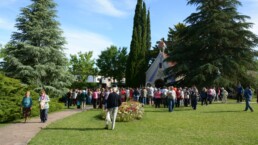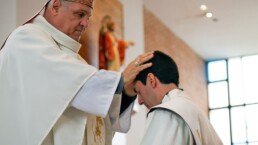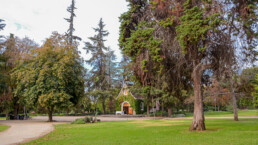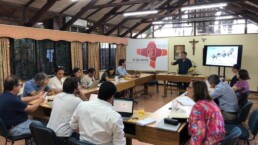Dachau – New Helvetia
In his first visits to South America, particularly to New Helvetia, after admiring with astonishment the similarity between the recently built Shrine and the original one, Father Kentenich told what had happened in Dachau, simultaneous to the construction of the First Daughter Shrine. Priests from different nations had arrived at the concentration camp: French, Polish, Dutch, Belgians, Czechs, etc. Schoenstatt’s world was opened to those who were interested.
But there was an insurmountable obstacle. It was a Movement which had its origins in Germany, the country which had separated them from their homeland, which had imprisoned them in deplorable conditions for no good reason. How could they attach themselves to a little chapel located precisely in that country which was so hostile towards them?
A Frenchman thought he had found the solution by saying that Schoenstatt was not in Germany, but in the world. But this abstract truth did not convince them.
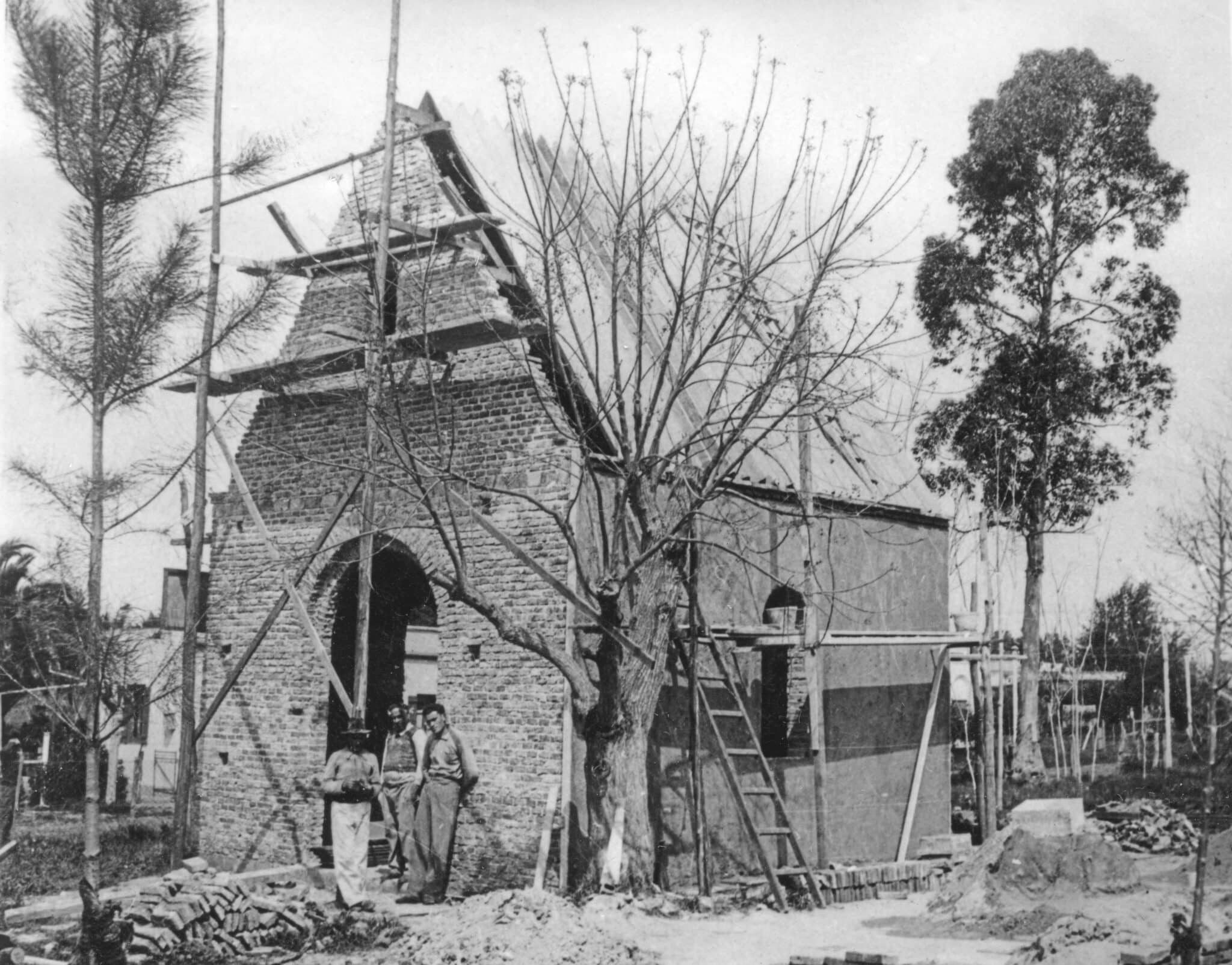
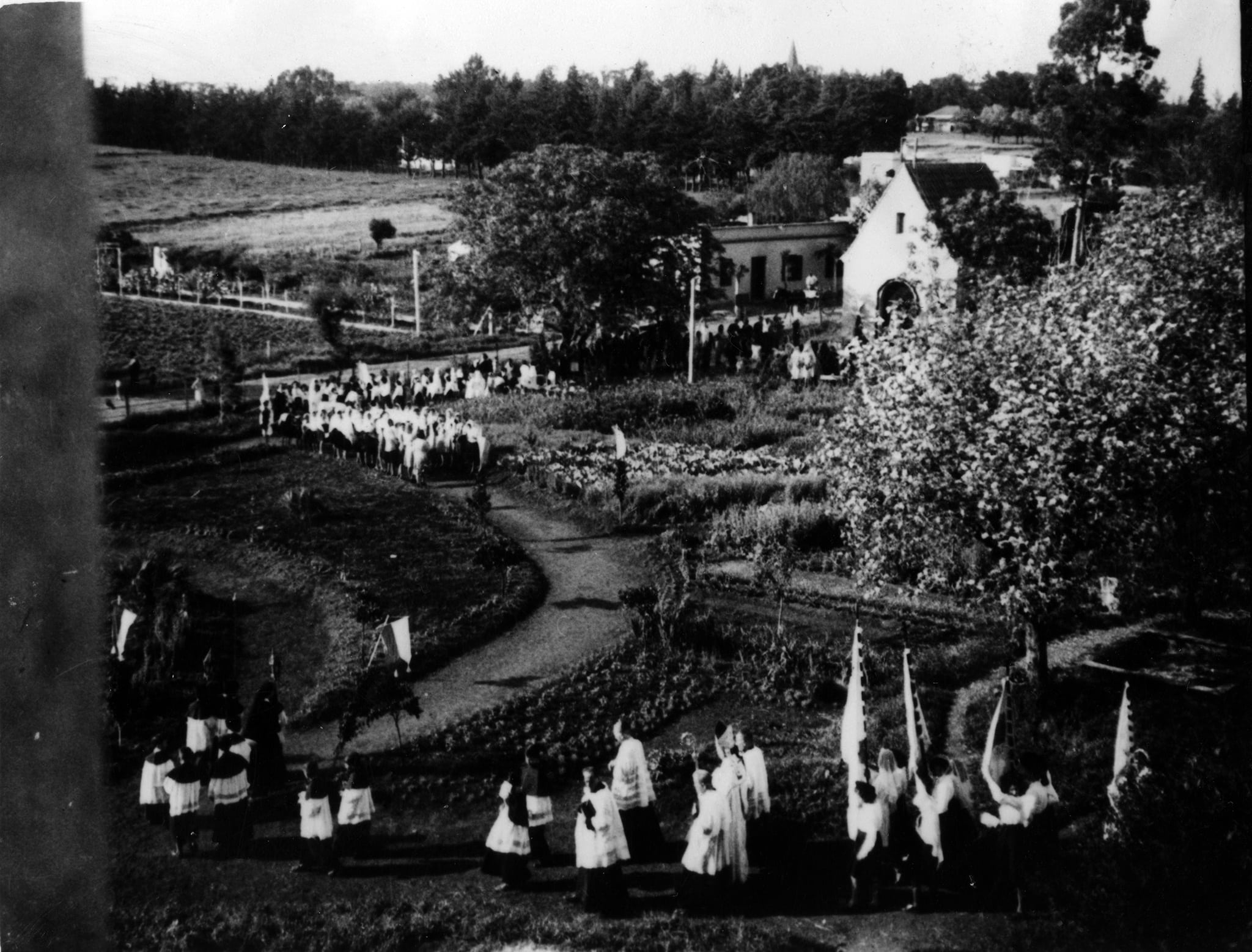
And it was then when, through a report sent from Uruguay, passing through Switzerland, and finally arriving clandestinely to Dachau, they found out what had happened in New Helvetia.
The report detailed how the people were gathering increasingly around the small Shrine. With this testimony, Father Kentenich related, all the skepticism came to a good conclusion and Schoenstatt took root in the hearts of those priests.
Thus, these groups of priests sealed their Covenant of Love with the MTA in 1944. Hence Father Kentenich prayed: “We were only a small group then, but with each passing year and to your glory we expanded to other noble nations who live close together with us here.” (Heavenwards, stanza 543).
Indeed, to be able to show a Daughter Shrine located outside of Germany was a trump card in unlocking the floodgate that prevented the flow of grace to the rest of the world.
Unity in diversity
One of Pope Francis’ favorite topics is the convergence amid tensions, the close complementarity between those who are different, taking into consideration every culture, the whole human race. “The Church, sent throughout the world as witness, to ‘sow’ a universal fraternity, respects and promotes the local identity with its many riches” (13.10.’21).
Who has not enjoyed the particular flavor of a local Shrine? When one visits other locations, one is amazed to see details that enhance the beauty of the Shrine, that give an original touch to the same little chapel that we find all over the world. These are the riches that each culture expresses in a thousand ways.
At the same time, we also know that when we arrive in an unknown or distant place we experience a unique sensation when we enter a Shrine: we have arrived home! Everything calms down and settles down within us.
Years ago, I was told a very enlightening story. A Chilean family with small children traveled to Germany. They did not speak German, nor did they have any acquaintances to welcome them. Since they were part of the Schoenstatt Family, they did not hesitate to go to the Original Shrine. As soon as they entered the Shrine, they heard the little voice of the youngest one, who was about three years old, and while pointing to the MTA picture, she exclaimed: “Mom, Chile!
This little girl was no longer abroad, she was in her homeland, in her land, safe and sheltered.
It is the experience of being sheltered that is so badly needed by every person wherever he/she may be.
The Daughter Shrine assures fidelity to its origin, to the original charism that is entrusted to the care of all the members of the large Family, and at the same time it enhances the strength of its children, who offer their contributions and enrich the whole.
The mystery of the flow of grace
When the first missionaries deliberated about the possibility of building the Shrine, they had to think about what would happen with the Capital of Grace, which is a fundamental part of the construction. They thought and discussed the subject at length and finally expressed it in this way: the current of the Original Shrine flows towards the Daughter Shrine and, through our contributions to the Capital of Grace, it returns enriched to the source, to the little chapel of the Schoenstatt Valley.
It is interesting that the Founder himself corroborated this upon his arrival and later expressed it in this way:
“Wherever a filial Shrine emerges, the current bursts forth with primal force, pouring from there its waters, bearers of salvation and blessing in the broadest of environments, but collecting, at the same time, new streams and rivers, just as they reach the Shrine through the Covenants of Love sealed there. Streams and rivers that it collects to finally lead them back to the Original Shrine” (Chronicle notes 1955).
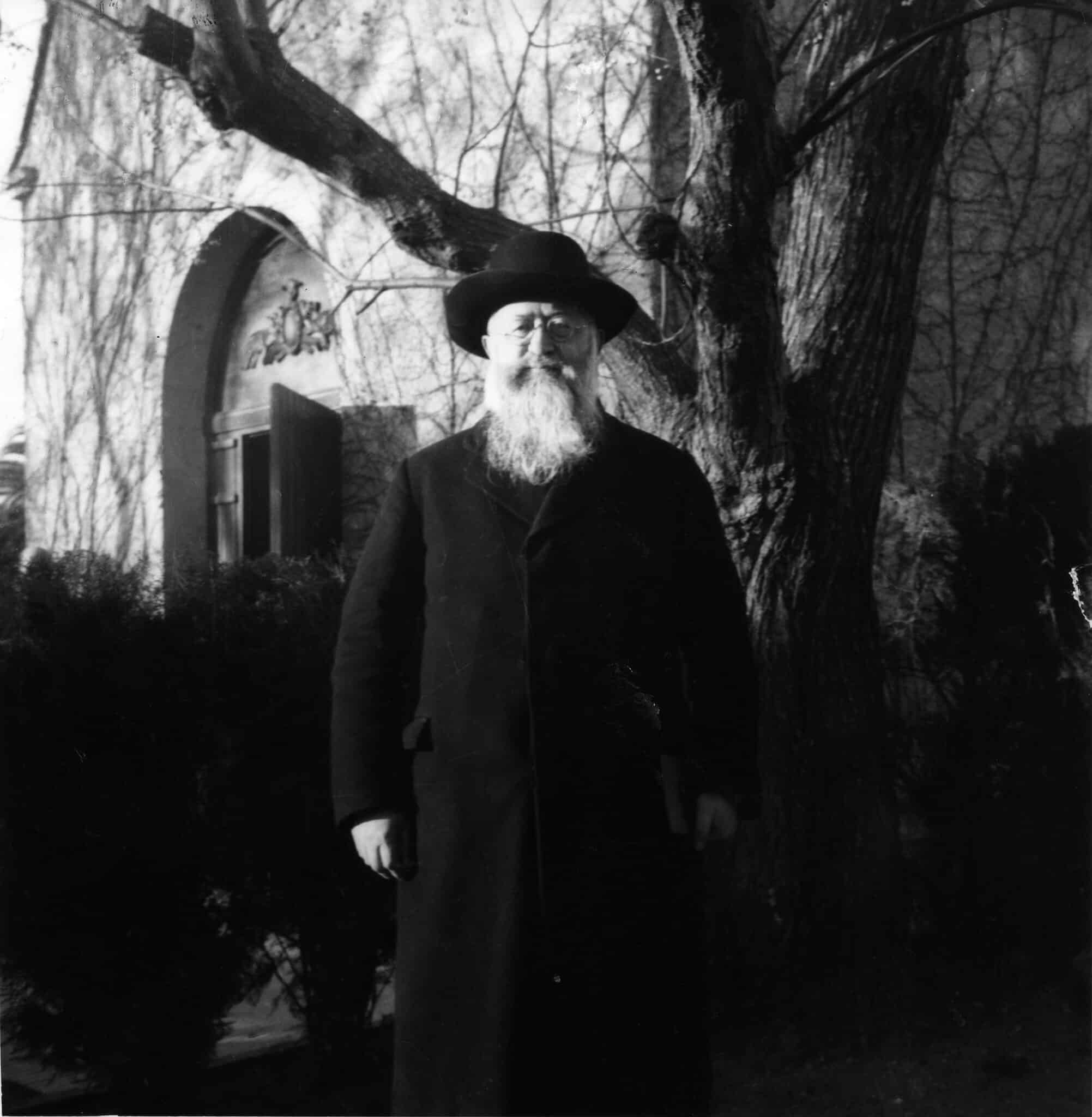
“The whole Work that has been developed is as much your work as mine” (Fr. Kentenich 11.08.’35).
This has always been the pride of our Founder.
What would Schoenstatt be without the Garden of Mary, without the Pilgrim Mother Apostolate, without so many noble initiatives born from the hearts of its children?
This is the case with the Daughter Shrines. They emerged from life; they became a dream due to the need and then the dream was conquered; and we now have them.
Today we contemplate the network of Shrines throughout the world, and it seems to us the most logical thing. It was not so in 1943. It was difficult to discern then. The Holy Spirit burst into the darkness and that is how the first missionary Sisters risked the construction without being able to consult either Schoenstatt or the Founder.
And because of the magnitude of this step that gave rise to a Copernican turning point, Father Kentenich later affirmed: “Next to January 20, 1942, there is no event that has influenced the most recent history of the Family as powerfully as the idea and the construction of the Daughter Shrines (…) They were to become supporting points for the kingdom of the Mother Thrice Admirable, from where she, as Queen of the World, could cast her nets and carry out her mission as educator” (The Secret of Schoenstatt’s Vitality, May 1952).
When celebrating the 25th anniversary of Father Kentenich’s ordination, he said to those present:
“I ask each one of you to meditate with sincerity and humility on what has emerged in the Family thanks to your heart’s blood.”
Isn’t it repeated today for each one of us? Have we not dropped our heart’s blood into the jar at the Shrine? Are we not responsible in some way for the growth of the Work?
And if we fail to find our personal contribution, what he added that very day will help us:
“In eternity we will learn how the smallest and most modest souls of our Family have enriched it; without their heroic life of sacrifices and prayer, we could not imagine the Family and its spirit as it is today. Yes, nothing without you! (…) I, just like a master builder, would build with the help of others. When I noticed that something good was developing, I would withdraw completely, thinking that this initiative would continue to grow without me” (11.08.’35).
Yes, truly: nothing without you, Mother; nothing without us. Only in Covenant does the Work advance and grow.
Towards the confines of the world
The grace of apostolic sending forth from the Original Shrine brought us the Daughter Shrines. This very grace is the one that prompts us to replicate them without rest. God needs to be close to man’s life, to accompany his journey, to gather his tears through the strong presence of a Mother who never tires of seeking and consoling her children.
Now Schoenstatt continues to advance IN its Shrines! Like giants in the plains of time, like flaming flags in the geography of all the continents, like capitals of the new evangelization, anchored in the mother land of the original Schoenstatt, they emerge as assurance of an internationality in which no one is left out, as assurance of the cultural diversity that enriches us all.
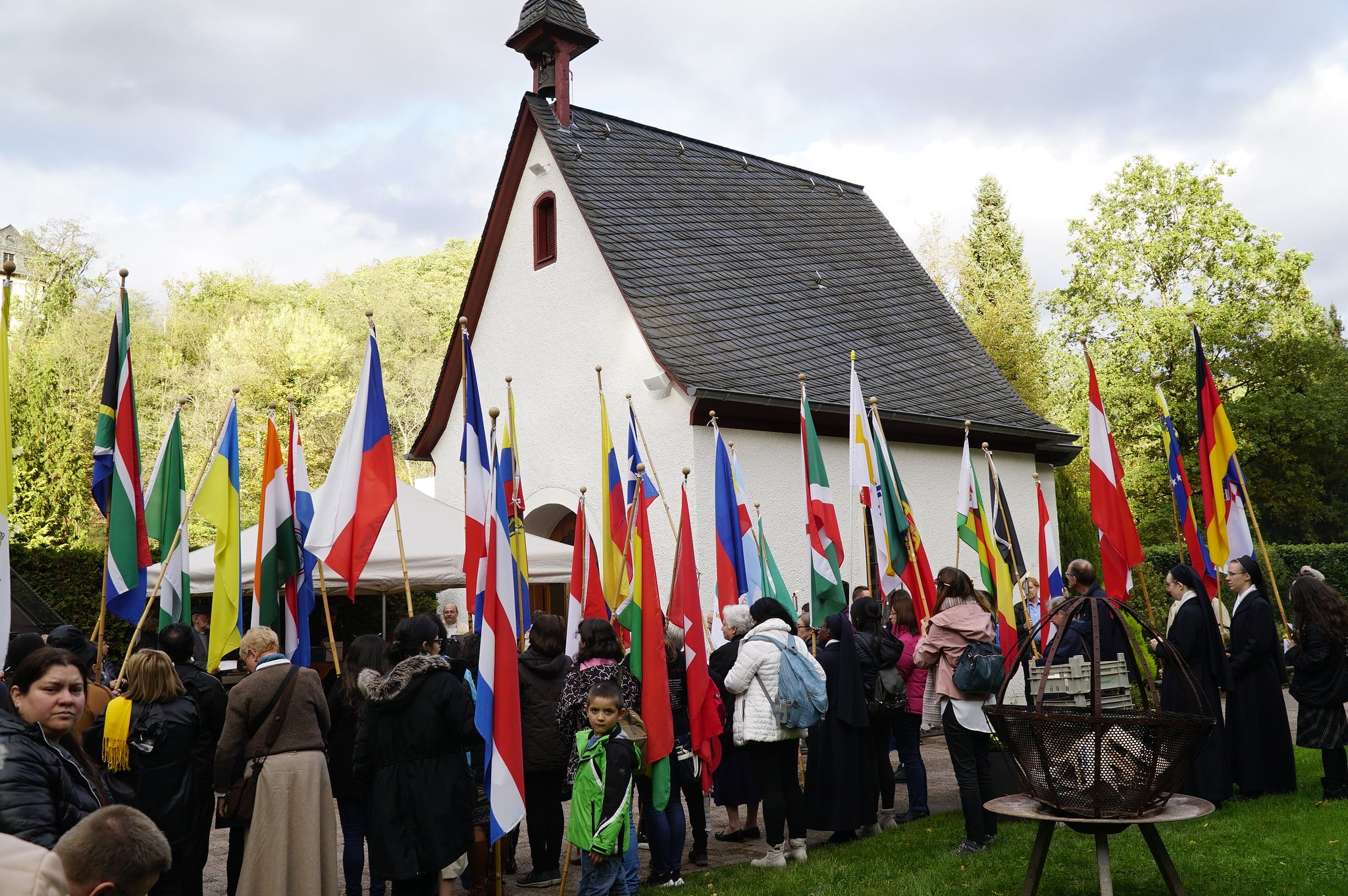
Related posts
April 26, 2024
First Schoenstatt Father from Mendoza, Argentina, ordained a priest
On Saturday, April 13, Agustín Ozcoidi was ordained a priest. Providence has allowed him to be the first Schoenstatt Father from Mendoza,…
April 24, 2024
We have a Shrine because there are pilgrims
It took me about twenty years before I could understand the significance of an experience I had as a child and realize how consistent it…
April 22, 2024
May 31st Jubilee: What is the progress on the preparations?
Interview with Fr. Gonzalo Illanes Fuertes, national director of the Schoenstatt Movement in Chile: Registrations have already entered the…

